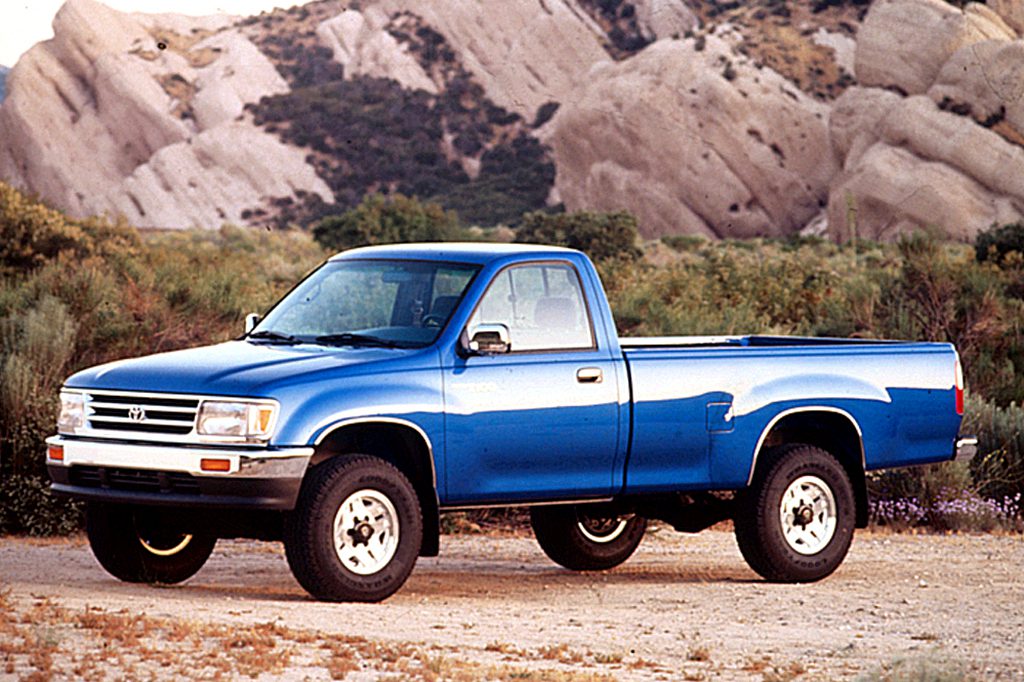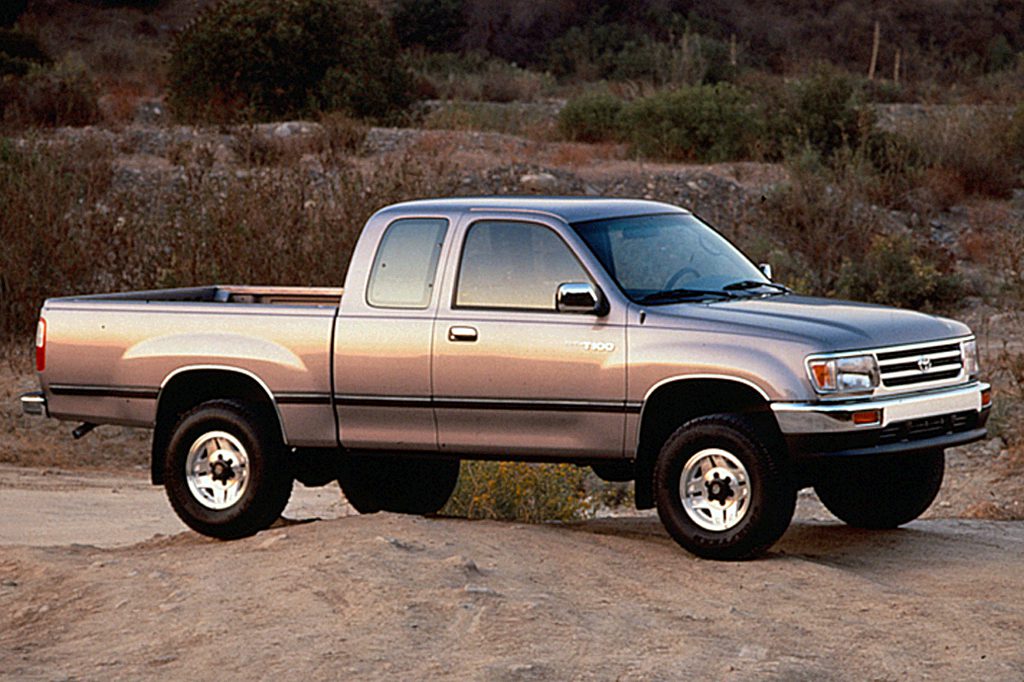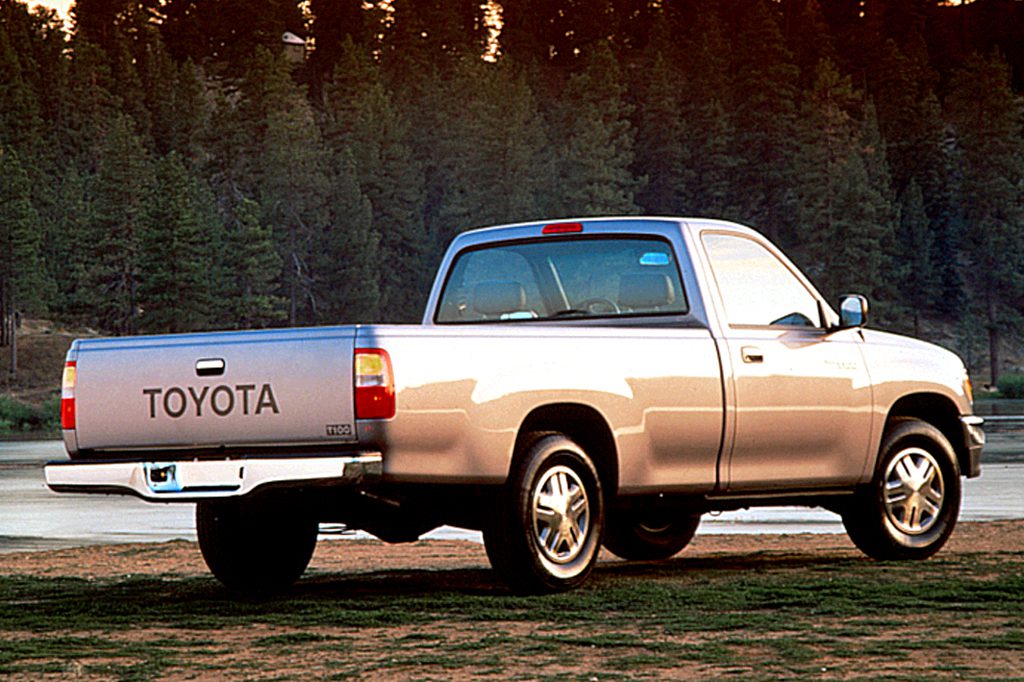| Large pickup truck; Built in Japan |
|
|
| Good condition price range: $1,000 – $5,000* |

1995 Toyota T100 regular cab

1995 Toyota T100 XtraCab extended cab

1994 Toyota T100 regular cab

1995 Toyota T100 XtraCab extended cab interior

1995 Toyota T100 V-6 engine
| Pros: |
|
| Cons: |
|
The bottom line is this: If you want more than a compact pickup, don’t need a V8 engine, and think getting added refinement is worth paying a little extra to get, the T100 is a great way to go.
Overview
The T100 looked like a full-size truck next to Toyota’s compact, but actually slotted in between the midsize Dodge Dakota and the true full-size trucks. Toyota’s 150-horsepower 3.0-liter V6 was the only available powerplant. Limiting appeal of early models was the fact initial T100s were only available in the regular-cab format. Two trim levels were offered–Standard and SR5–both available in either 2WD or 4WD. Standard models came with a 60/40 split bench seat as does the SR5. T100s came with a small storage box behind the seats, and SR5s provide a built-in tool box. Power steering and rear antilock brakes were standard on all models.
Yearly Updates
| 1994 T100 Pickup A driver-side airbag and the addition of a 4-cylinder as the new base engine are the major changes for the T100’s second model year. A 150-horsepower, twin-cam 2.7-liter 4-cylinder bows in a new entry-level T100 model, available only in 2WD format. In addition to the driver-side airbag, all T100s gain the requisite side door-guard beams and a center high-mount stoplamp. Among the other changes, there’s a new 2WD DX V6 model, plus a One Ton model. |
| 1995 T100 Pickup Toyota finally adds an extended-cab model to its T100 lineup, and drops the previous V6 for a new 190-horsepower V6. The T100s new Xtracab is available in both DX and SR5 grades, and provides an extra 21.7 inches to the cab. They come equipped with a 60/40 split front bench seat, forward-facing 50/50 split jump seats for three, with accompanying safety belts. The new V6 is available with either a 5-speed manual or 4-speed automatic, in 2- or 4-wheel drive. |
| 1996 T100 Pickup The T100 One Ton with its 2480-pound payload capacity is discontinued. |
| 1997 T100 Pickup Bucket seats and 16-inch-diameter wheels are new features available this year on Toyota’s nearly full-size pickup. |
| 1998 T100 Pickup T100 sees no changes for ’98. But an all-new model would be ready for ’99. |
